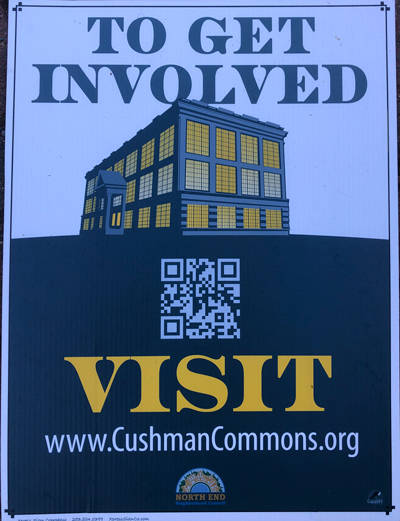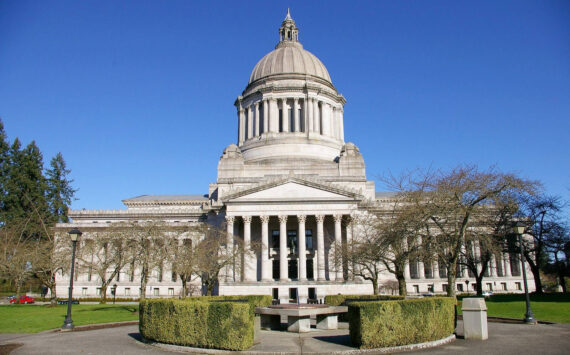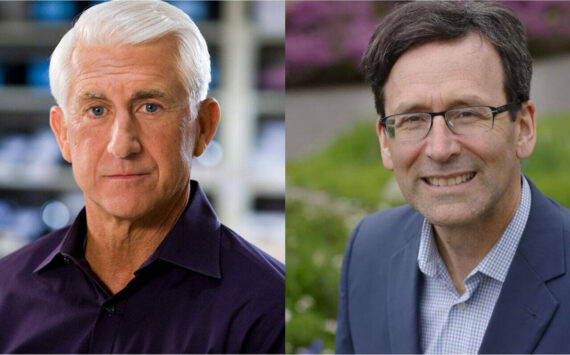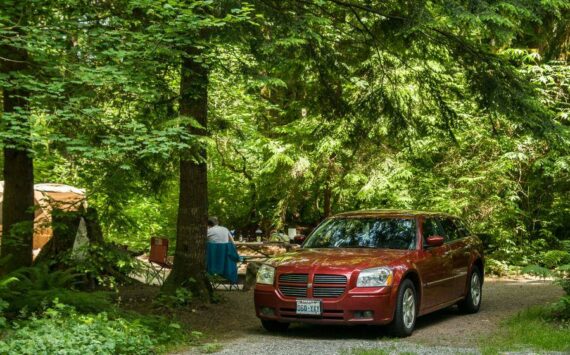By Morf Morford
Tacoma Daily Index
You may have seen the signs around the North End of Tacoma.
The idea is to generate interest in and support for a community center in the currently vacated Cushman Substation on North 21st about midway between Union and Proctor.
As with every idea or proposal, it has been met with support, opposition and questions.
We are far from any official decision for quite some time, but as far as unofficial community suggestions, the preferred choices come down to two polar extremes; a community center, perhaps like the Star Center in South Tacoma or affordable housing.
As in any internecine battle, the two sides have taken up positions and presented their arguments all over social media and neighborhood conversations.
Some discussions have been helpful and productive. Some not so much.
The argument for affordable housing goes something like this; the property is in a highly desirable area, walkable to Proctor businesses and services and, Tacoma, the North End in particular, needs more affordable housing.
I don’t think anyone would argue with those statements. But they might argue with the suitability of the Cushman Substation grounds as an answer to any of it.
The Cushman Substation is a historic building in many respects, partly out of design but also as a monument to the first Public Utility District (PUD) in the country.
Whether the main building is suitable for conversion to housing is a question for architects.
But I can confirm that it is a rule of thumb that new construction is vastly cheaper than rehabbing an existing structure. If your goal is “affordable” housing, I cannot imagine a project of that scale meeting that goal.
If the goal is a mix of market price and affordable housing, take a walk around Proctor. We already have plenty of that – and again, I’m not at all convinced that the end goal of “affordable housing” would be achieved.
If the goal is to have the Cushman Substation exclusively dedicated to “affordable” housing, I urge you to visit some of the “affordable” housing complexes in almost any urban area – even many parts of King County.
These “affordable” housing units quickly become islands of stereotypes and rumors, if not trouble areas in all kinds of ways.
The word “affordable” by the way, makes me crazy. Affordable for whom under what conditions?
The word “affordable” is code for low income, if not low quality, and many times subsidized housing.
I was sorry to hear people I know, and generally respect, resort to name-calling and the use of weary clichés like “NIMBY” (Not In My Back Yard) for those who do not support the “affordable” housing option.
I have talked to several of those people. Literally every one of them supports more affordable housing; but not in a big block, and certainly not all at one site.
Tacoma’s North End has several lots that would make ideal settings for mid-sized housing units (Tacoma has an abundance of single-family homes, and large (over 100 units) complexes, but very few in the middle range of 2-12 units.
This “missing-middle” is the key to attractive, appealing, and yes, “affordable” housing that residents like, communities can be proud of and that build, not degrade neighborhoods.
These mid-sized complexes could be affordably built and unobtrusively scattered around the area with no stigmatizing label of “affordability.”
In this time of constrained travel, my wife and I have walked many of the neighborhoods of Tacoma. The North End has many homes in or near derelict condition – and many unimproved lots. I am sure ten, if not twenty mid-range sized units could be built unobtrusively around the area.
Or is the issue not really housing, but some veiled attempt at neighborhood shaming?
I have heard the argument endlessly; other neighborhoods have “affordable” housing, the North End needs to have its share.
The irony is that there is much “affordable” (subsidized and geared to low income) housing in and around the North End.
Have you driven by North Pearl lately?
Have you noticed the Stadium District?
The Stadium District is easily the most population dense neighborhood in Tacoma. And it is certainly the most population dense area of Pierce County.
On a person per square mile basis, Tacoma’s North End (east of Pearl) is one of the highest in the city (a little over 5,600), second only to parts of the South End (with about 5,800).
see https://statisticalatlas.com/place/Washington/Tacoma/Population#data-map/neighborhood or https://statisticalatlas.com/place/Washington/Tacoma/Population#figure/neighborhood.
And Tacoma’s North End population, demographically speaking, is older than other areas.
So perhaps “affordability” is the wrong issue.
If housing is to be a part of the Cushman equation, maybe a better direction would be housing for those with minimal housing needs and who have a high level of commitment to neighborhoods – and schedules that allow for local volunteer work: senior citizens.
Perhaps to combine “affordability” and senior housing, small cottages or apartments could be designed, discretely scattered around the grounds and offered to residents on a labor-exchange basis instead of standard payment.
If our goal is truly “mixed-use” of the Cushman site, a full 24 hour, seven day a week use or occupancy would be to everyone’s benefit.
These are just suggestions; my main point is that the Cushman Substation is as close to a blank-slate as our city will ever see.
It’s a prominent site, one rich in historical and architectural significance.
Some argue “the North End has Tacoma’s best parks; Point Defiance and Ruston Way.”
Technically, Point Defiance is in the West End, but yes, it’s close.
Point Defiance and the waterfront along Ruston Way are Tacoma’s parks – open to all – and not just Tacoma residents.
But besides parks along the North End’s margins, or during inclement weather, what are some year-round non-commercial or residential gathering places?
In other words, what part of Tacoma’s North End is not already dedicated to commerce or housing?
There are those who might object by saying that Tacoma’s North End already has many “nice” things.
It does.
But how many of them are public? How many of them, to use urban-planning jargon, are “mixed-use”?
If you have seen the extended “affordable housing blocks” in many major cities, after only a few years no one likes them; the residents, the neighbors or even the developers.
In response to the NIMBY nay-sayers, I have my own term “NIMNBI”. This stands for Not In My Neighborhood’s Best Interest.
I can sense the real estate agents slathering over this piece of property, but my eye is on the long-term character and identity, not just of that neighborhood, and not just the North End, but all of Tacoma.
Would additional housing or a community center contribute to the well-being and best interests of the neighborhood five, ten even fifty years from now?
I have not analyzed the soil on the ground surrounding the Cushman Substation, but considering its use for multiple decades, it seems more than likely that toxic materials have almost certainly permeated the soil. Remediation for housing would be expensive and probably hazardous.
I’d like to see the Cushman Substation as a year-round community center, perhaps with concerts (the acoustics must be fabulous in there) with space perhaps for a year-round farmers market or performance space.
Part of it could hold a hands-on museum demonstrating the influence of public power on the everyday life and economy of the Greater Tacoma area.
The facility is a once in city’s life-time opportunity to do something creative and unique as a tribute to the history and character of the region.
And yes, I am biased; I want to see a use of that facility that contributes to the health, vitality and sense of community and cohesion of the neighborhood, a use that is as “mixed-use” as possible, open and accessible to everyone of all incomes, interests and ability levels.
The last thing I would want to see at that site would be a segregated (deliberately or not) low (or even high) income housing center.
It’s a site already rich in history and cultural as well as architectural appeal.
When it comes to any development or design, I’d like the central question to be “What is in the long term best interest of the neighborhood?”
To put it plainly, we’ll never see an opportunity like this again.
As many of us have for years, we will drive by that building and either be proud of what we have done with it or look at it as another example of what could have been.
The Cushman substation is a striking, historically rich site which deserves – and offers – a rich and attractive set of uses to match its long contributions to Tacoma’s history.





